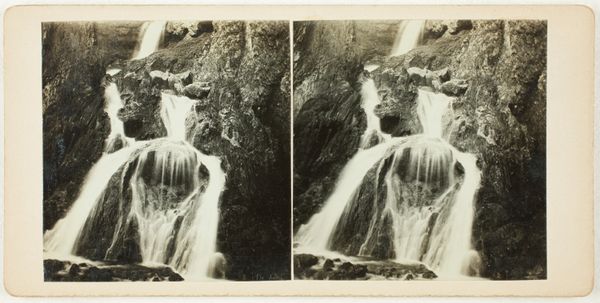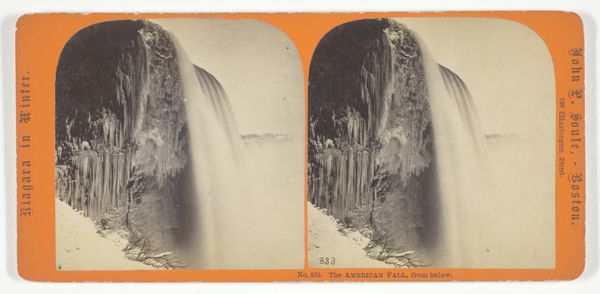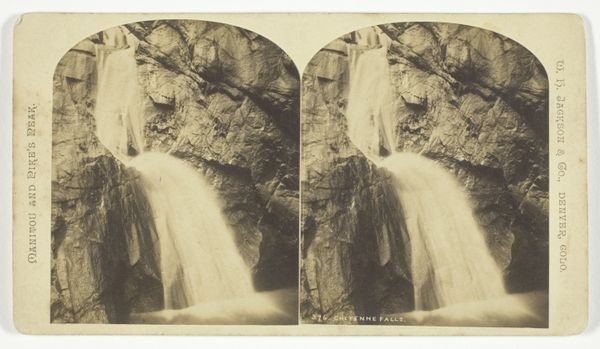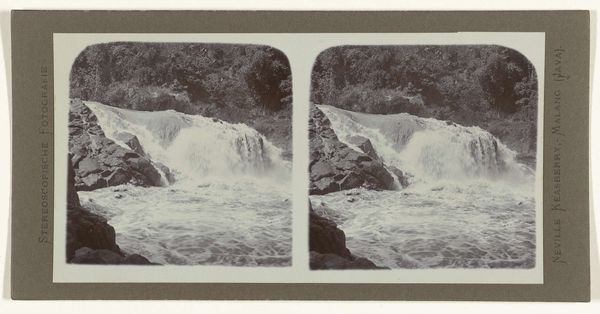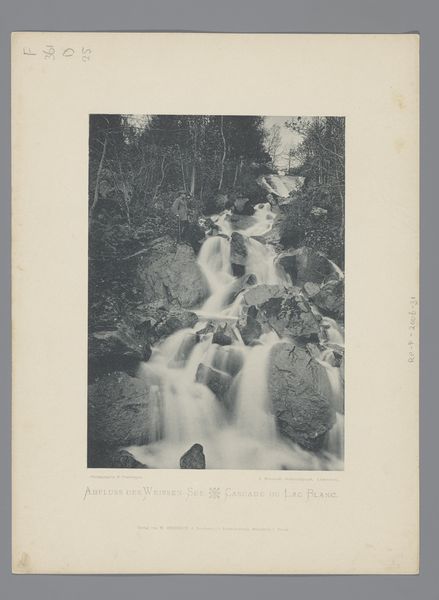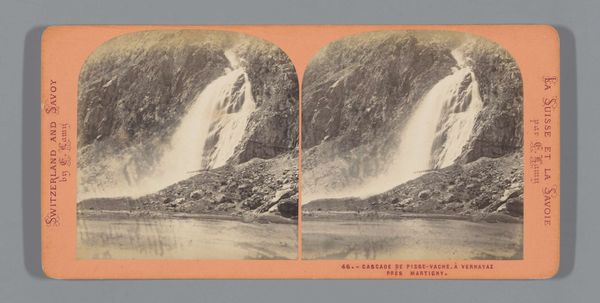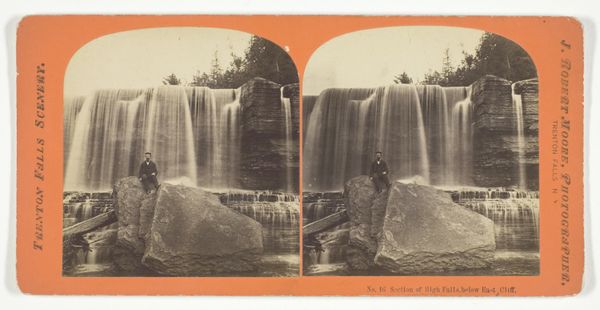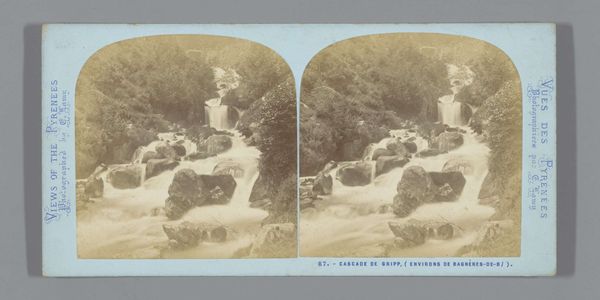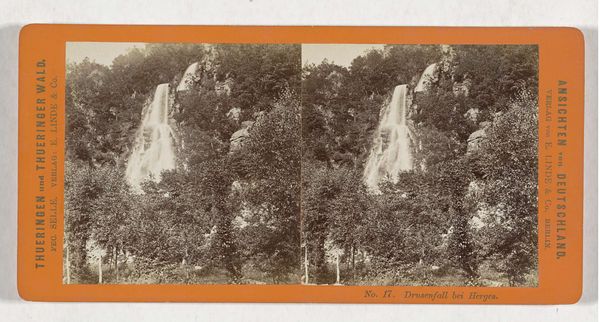
photography, gelatin-silver-print
#
landscape
#
waterfall
#
photography
#
gelatin-silver-print
#
hudson-river-school
#
realism
Dimensions: height 87 mm, width 173 mm
Copyright: Rijks Museum: Open Domain
Curator: This is “Crystal Cascade in White Mountain National Forrest” by John P. Soule, a gelatin-silver print likely made between 1862 and 1874. Editor: Ah, my first thought? Serenity now! Though I have to admit, the monochromatic palette feels a little… restrained. All that pent-up potential energy of the water, captured in such a muted way. Curator: Well, consider the context. Landscape photography, especially depicting untouched wilderness, became a really powerful statement at a time when industrialization was rapidly changing the American landscape. Soule, aligning himself with the Hudson River School’s ethos, uses the photograph as a potent medium for conveying the importance of preserving these natural cathedrals. Editor: Natural cathedrals – I love that! It certainly gives you a sense of the sublime, doesn't it? I’m drawn to the texture of the cascading water, frozen mid-rush, contrasted against the stillness of the surrounding forest. Curator: Precisely. Soule’s photographic skill brings forward the grandeur of the falls, playing with light and shadow. This method aligns it with the aesthetics of Realism and contributes to its picturesque effect. It’s interesting how these photographs of scenic vistas weren't just about capturing the beauty, they became tools to promote tourism. Railroad companies distributed these very images to invite travelers out West and further contribute to territorial expansion. Editor: Oh, so a marketing tool in disguise! Fascinating how something so seemingly pristine has layers of socioeconomic influences within. Makes you question the romantic ideal that meets the eye initially. Curator: Exactly. It makes you see that art always functions within broader political frameworks, whether we intend it to or not. Editor: Looking again, that delicate balance of wildness and intentional framing does create an odd tension. It gives it a feeling almost manufactured despite the untamed cascade on display. Curator: Right. It reflects our complicated relationship with nature, the simultaneous desire to appreciate and control it. I keep wondering, what else lies hidden beneath all that “crystal”. Editor: And, like all the best art, that sense of mystery and intrigue is precisely what keeps us coming back.
Comments
No comments
Be the first to comment and join the conversation on the ultimate creative platform.
